How Much Electricity Does One Utility Scale Turbine Generate?
An average onshore 2 MW wind turbine will produce approximately 4.1 million kWh in a year in New York, or the equivalent electric use of more than 620 average NYS households.The capacity factor (actual average power generated divided by the rated peak power) for an average New York wind turbine is 23 percent, comparable to the 29 percent capacity factor of natural gas generators in NYS.8 This gap would be smaller were it not for the fact that presently grid operators in New York prefer wind farms rather than fossil fuel plants to shut down when excess generation is taking place.
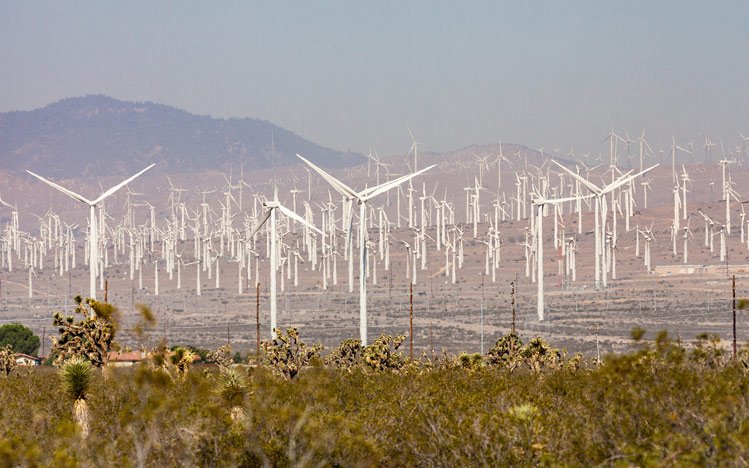
How Established is the Technology?
Commercial wind farms have been in existence for over 35 years. The world’s first commercial scale wind turbine (1 MW) was built and connected to the grid in Vermont in 1941. In the 1970’s NASA began research into large-scale commercial turbines and installed 13 experimental units in Ohio. In 1980, the world’s first commercial wind farm, consisting of 20 turbines was installed in New Hampshire. Today, every state in the United States has an operational wind energy project, a wind-related manufacturing facility, or both.
As of the end of 2015, world wind turbine capacity is approximately 428 GW (428 billion watts). In the U.S. and Puerto Rico alone, there was nearly 66 GW of wind capacity generated by roughly 46,000 operational turbines in 2014. During the last decade there has been a more than seven fold increase in wind power generation in the U.S.
General Electric (GE) turbines account for more than 40 percent of U.S. installed wind capacity. Along with manufacturers Vestas and Siemens, these three companies account for roughly three-quarters of all wind power installed in the U.S. The leading turbine designs from these manufactures have extensive experience in the U.S. and around the world. For example, through 2014, the GE 1.5 MW family of turbines has accumulated more than 92,000 turbineyears of experience in the U.S. alone.The Siemens 2.3 MW family of turbines and the Vestas 1.65 MW and 1.8 MW turbines have accumulated more than 25000,14,000, and 10,000 turbineyears of experience respectively. In New York alone, operating wind farms have accumulated more than 4,000 turbine-years of experience with GE turbines, and more than 2,300 turbineyears of experience with Vestas turbines. Even newer models, such as the GE 2.5 MW family of turbines that has been proposed for use at the first wind farm proposed in Tompkins County, has significant operating experience. For example, the North and South Hurlburt Wind Farms and the Horseshoe Bend Wind Farm in northern Oregon have already accumulated more than 1,250 turbine-years of experience with these turbines. Finally, turbines with larger blades than those so far proposed for use in Tompkins County also have significant operating experience in the U.S. with more than 1,500 turbine-years of operation accumulated to date for wind turbines with blades more than 107 meters in diameter.
While the industry is experimenting all the time with measures to make turbines more efficient and less expensive, this is now a very proven technology.
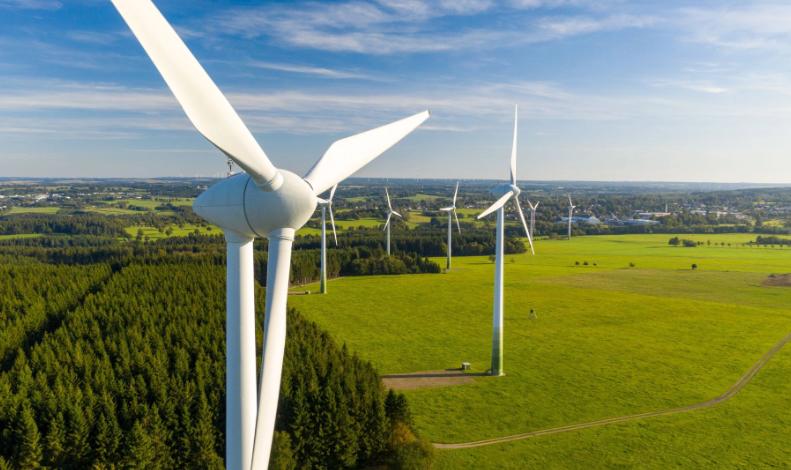
If the Wind Stops Blowing Does Our Energy Supply Stop?
No, it does not. Today’s electric grid consists of a vast network of interconnected power transmission lines that span the U.S. and Canada. Power transmission on the grid is managed by regional system operators whose sophisticated technology allows them to measure and adjust, within seconds, the power supply to any given area. The electric grid is in a constant state of flux—one moment a large industrial motor starts up, at another moment, a squirrel shorts out a transformer—but these supply and demand fluctuations are readily accommodated, just as wind (and solar) intermittency are accommodated. Wind and solar resources become less variable if aggregated across a broader geographic region. The bigger the geographical area linked up by power lines, the more likely it is that the sun is shining or the wind is blowing somewhere within that area.
Even as wind power generation becomes a higher percentage of New York's electric generation than currently exists, modeling shows it will be effectively and economically managed, and thus the intermittent nature of wind will not result in negative impacts on grid reliability or efficiency. In addition, through improved forecasting, geographic distribution, and other techniques, wind power does not have to rely on reserve capacity to back up 100 percent of its generation. For example, a study of Minnesota’s grid found that going to 25 percent wind power in the State by 2020 would have no impact on spinning or non-spinning reserve capacity requirements and would require a minimal increase of total operating reserves from 5 percent before the increase in wind power to just over 7 percent.
A modern wind turbine produces at least some electricity 70-85 percent of the time, generating varying quantities of electricity at different wind speeds. The wind is generally stronger at night than in the day, and stronger in the winter than in the summer which makes wind a good complement to solar electric generation. System operators in California, New York and New England have released data showing that wind power provided critical energy when they needed it most in the winter of 2014.

How Established is the Technology?
Commercial wind farms have been in existence for over 35 years. The world’s first commercial scale wind turbine (1 MW) was built and connected to the grid in Vermont in 1941. In the 1970’s NASA began research into large-scale commercial turbines and installed 13 experimental units in Ohio. In 1980, the world’s first commercial wind farm, consisting of 20 turbines was installed in New Hampshire. Today, every state in the United States has an operational wind energy project, a wind-related manufacturing facility, or both.
As of the end of 2015, world wind turbine capacity is approximately 428 GW (428 billion watts). In the U.S. and Puerto Rico alone, there was nearly 66 GW of wind capacity generated by roughly 46,000 operational turbines in 2014. During the last decade there has been a more than seven fold increase in wind power generation in the U.S.
General Electric (GE) turbines account for more than 40 percent of U.S. installed wind capacity. Along with manufacturers Vestas and Siemens, these three companies account for roughly three-quarters of all wind power installed in the U.S. The leading turbine designs from these manufactures have extensive experience in the U.S. and around the world. For example, through 2014, the GE 1.5 MW family of turbines has accumulated more than 92,000 turbineyears of experience in the U.S. alone.The Siemens 2.3 MW family of turbines and the Vestas 1.65 MW and 1.8 MW turbines have accumulated more than 25000,14,000, and 10,000 turbineyears of experience respectively. In New York alone, operating wind farms have accumulated more than 4,000 turbine-years of experience with GE turbines, and more than 2,300 turbineyears of experience with Vestas turbines. Even newer models, such as the GE 2.5 MW family of turbines that has been proposed for use at the first wind farm proposed in Tompkins County, has significant operating experience. For example, the North and South Hurlburt Wind Farms and the Horseshoe Bend Wind Farm in northern Oregon have already accumulated more than 1,250 turbine-years of experience with these turbines. Finally, turbines with larger blades than those so far proposed for use in Tompkins County also have significant operating experience in the U.S. with more than 1,500 turbine-years of operation accumulated to date for wind turbines with blades more than 107 meters in diameter.
While the industry is experimenting all the time with measures to make turbines more efficient and less expensive, this is now a very proven technology.

If the Wind Stops Blowing Does Our Energy Supply Stop?
No, it does not. Today’s electric grid consists of a vast network of interconnected power transmission lines that span the U.S. and Canada. Power transmission on the grid is managed by regional system operators whose sophisticated technology allows them to measure and adjust, within seconds, the power supply to any given area. The electric grid is in a constant state of flux—one moment a large industrial motor starts up, at another moment, a squirrel shorts out a transformer—but these supply and demand fluctuations are readily accommodated, just as wind (and solar) intermittency are accommodated. Wind and solar resources become less variable if aggregated across a broader geographic region. The bigger the geographical area linked up by power lines, the more likely it is that the sun is shining or the wind is blowing somewhere within that area.
Even as wind power generation becomes a higher percentage of New York's electric generation than currently exists, modeling shows it will be effectively and economically managed, and thus the intermittent nature of wind will not result in negative impacts on grid reliability or efficiency. In addition, through improved forecasting, geographic distribution, and other techniques, wind power does not have to rely on reserve capacity to back up 100 percent of its generation. For example, a study of Minnesota’s grid found that going to 25 percent wind power in the State by 2020 would have no impact on spinning or non-spinning reserve capacity requirements and would require a minimal increase of total operating reserves from 5 percent before the increase in wind power to just over 7 percent.
A modern wind turbine produces at least some electricity 70-85 percent of the time, generating varying quantities of electricity at different wind speeds. The wind is generally stronger at night than in the day, and stronger in the winter than in the summer which makes wind a good complement to solar electric generation. System operators in California, New York and New England have released data showing that wind power provided critical energy when they needed it most in the winter of 2014.
Post a Comment:
You may also like:

Featured Articles
How Much Energy Will Wind Turbine ...
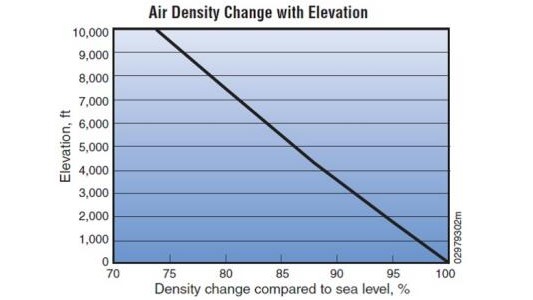 According to the AWEA Small Wind Turbine Performance and Safety Standard, the Rated Annual Energy of a wind turbine for ...
According to the AWEA Small Wind Turbine Performance and Safety Standard, the Rated Annual Energy of a wind turbine for ...
 According to the AWEA Small Wind Turbine Performance and Safety Standard, the Rated Annual Energy of a wind turbine for ...
According to the AWEA Small Wind Turbine Performance and Safety Standard, the Rated Annual Energy of a wind turbine for ...How do Wind Turbines Work?
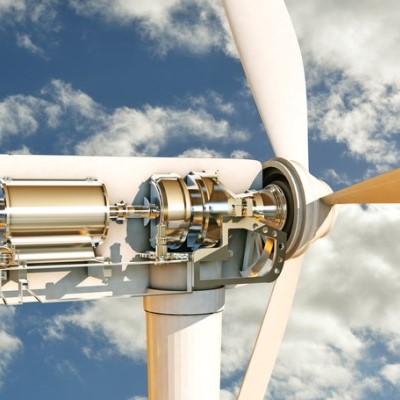 Wind turbines generate electrical power in the same way as all other generation technologies. The only difference is in the ...
Wind turbines generate electrical power in the same way as all other generation technologies. The only difference is in the ...
 Wind turbines generate electrical power in the same way as all other generation technologies. The only difference is in the ...
Wind turbines generate electrical power in the same way as all other generation technologies. The only difference is in the ...What Sounds Do Turbines Make?
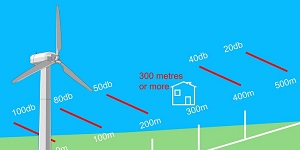 Modern low RPM (Revolutions Per Minute) turbines are very quiet, with sound levels usually below that of typical ambient noise in ...
Modern low RPM (Revolutions Per Minute) turbines are very quiet, with sound levels usually below that of typical ambient noise in ...
 Modern low RPM (Revolutions Per Minute) turbines are very quiet, with sound levels usually below that of typical ambient noise in ...
Modern low RPM (Revolutions Per Minute) turbines are very quiet, with sound levels usually below that of typical ambient noise in ...Does the Sound of Wind Turbines Affect ...
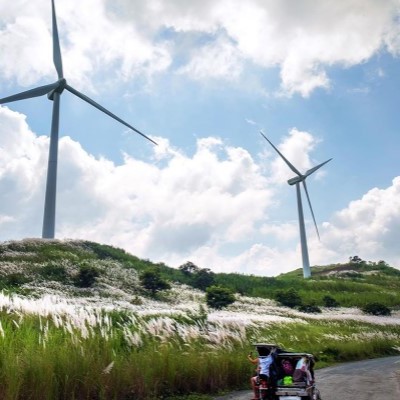 With respect to wind turbine noise, the one adverse impact that is supported by epidemiological data is an association between ...
With respect to wind turbine noise, the one adverse impact that is supported by epidemiological data is an association between ...
 With respect to wind turbine noise, the one adverse impact that is supported by epidemiological data is an association between ...
With respect to wind turbine noise, the one adverse impact that is supported by epidemiological data is an association between ...Is Wind Energy Practical for Me?
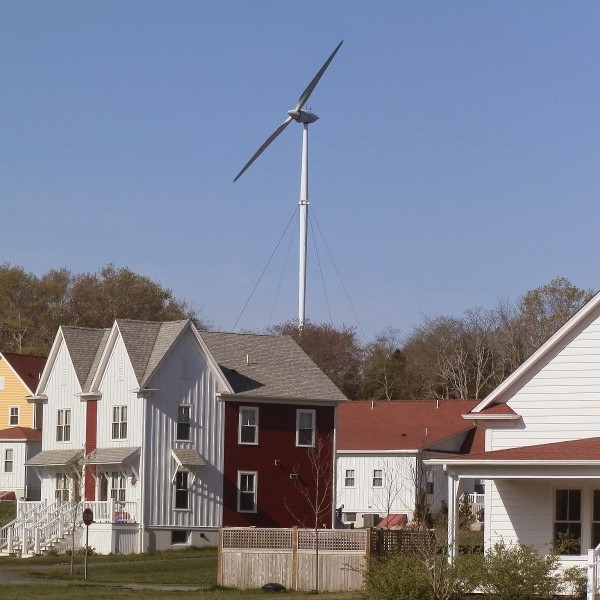 Can I use wind energy to power my home? More people across the country are asking this question as they look for a hedge ...
Can I use wind energy to power my home? More people across the country are asking this question as they look for a hedge ...
 Can I use wind energy to power my home? More people across the country are asking this question as they look for a hedge ...
Can I use wind energy to power my home? More people across the country are asking this question as they look for a hedge ...